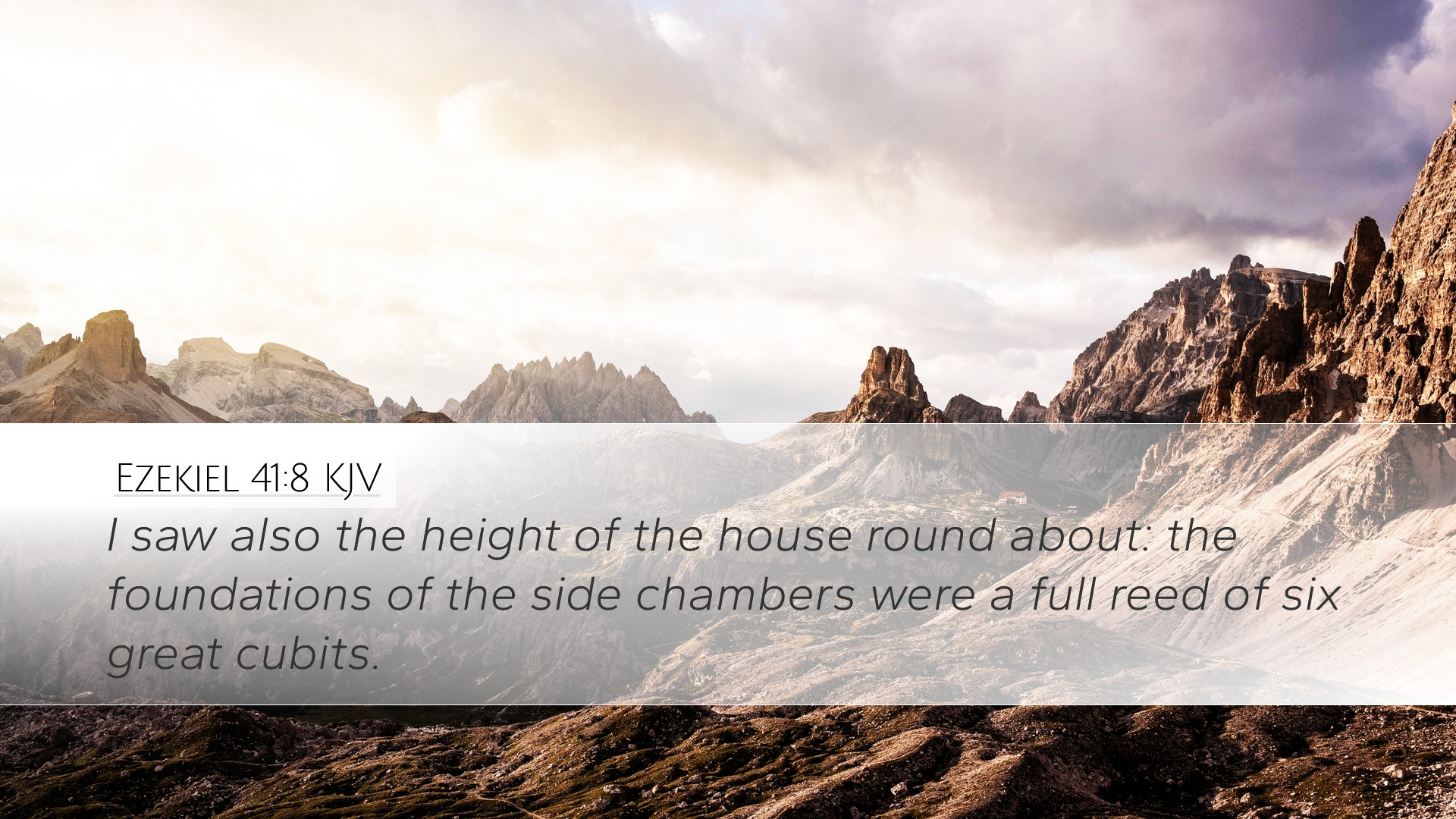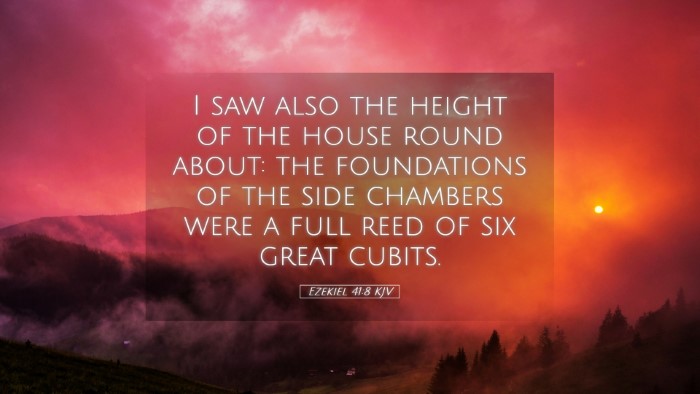Commentary on Ezekiel 41:8
Ezekiel 41:8 states, "I saw in the vision of the temple a narrow space all around the temple; the foundations of the outer court were of the same thing." This verse offers profound insights into the architectural aspects of the temple and symbolically reflects on the nature of the worship within it. Various public domain commentaries provide a rich exploration of these elements.
Architectural Significance
Matthew Henry emphasizes the meticulous design of the temple that Ezekiel saw. He notes that the measurements and designs were precisely ordained, which signifies God’s attention to detail in the creation of a space devoted to His presence and worship. This precision also conveys the importance of order and reverence in worship.
Divine Order in Worship
According to Henry, the narrow space around the temple represents divine order. As God is a God of order, the design of the temple serves as a model for how worship should be approached. Worship must be conducted with an understanding of holiness and separation; the outer court serves as a boundary reminding the worshippers of their distance from the absolute holiness of God.
Symbolic Implications
Albert Barnes expands on the symbolic implications of the temple's structure. He suggests that the narrow space signifies a transitional phase between the holy presence of God within the temple and the outside world, which is often marred by sin. This division is intentional, encouraging believers to recognize their need for sanctification before entering into God’s presence.
- Holy versus Profane: The sacred space of the temple contrasts sharply with the secular world. This dichotomy urges believers to pursue holiness in their lives.
- Accessibility: While there is a separation, Barnes points out that the narrow space also allows for a transition, indicating that while access to God is limited, it is still available through proper means.
Encouragement for Worshippers
Both Henry and Barnes highlight that this structured proximity to God should inspire a sense of awe and responsibility among worshippers. The narrowness signifies that one's approach to God must be considered and intentional.
Theological Reflections
Adam Clarke provides an additional theological reflection on this verse. He posits that the narrow space embodies the idea that God is both imminent and transcendent. While God desires a relationship with humanity, there remains an essential separation due to His holiness. Clarke's commentary reminds readers that approaching God requires preparation of the heart and spirit.
Preparation for Worship
Clarke notes that the act of entering God’s presence should not be taken lightly. The narrowness of the space can represent spiritual discipline; worshippers are called to prepare themselves mentally and spiritually. Such preparation may include confession, seeking forgiveness, and cultivating a heart of worship.
Historical Context
Understanding the historical context of Ezekiel's vision reinforces the significance of this verse. The Israelites were in exile and longed for a return to worship in the temple. This vision provided them with hope for restoration and a future reestablishment of worship. The details Ezekiel describes can encourage the exiled community that, even in dispersion, God is still present and is restoring His people.
Hope for Restoration
In the broader context of the chapter, this temple vision symbolizes hope and renewal. Ezekiel communicates not only the design and purpose of the temple but also the promise that Israel would return to a right relationship with God. The architectural details reflect God’s commitment to reclaim His people and lead them back to a rightful place of worship.
Conclusion
Ezekiel 41:8 encapsulates key themes of divine order, holiness, and communal restoration. By examining the insights provided by notable public domain commentaries, pastors, theologians, and scholars can gain a meaningful understanding of this scripture. It serves as a reminder of the sacredness of worship and the intentionality with which believers must approach their relationship with God.
As believers reflect on the temple vision revealed to Ezekiel, they are encouraged to cultivate an attitude of reverence, seek holiness, and remain hopeful for the restoration of their communion with God.


